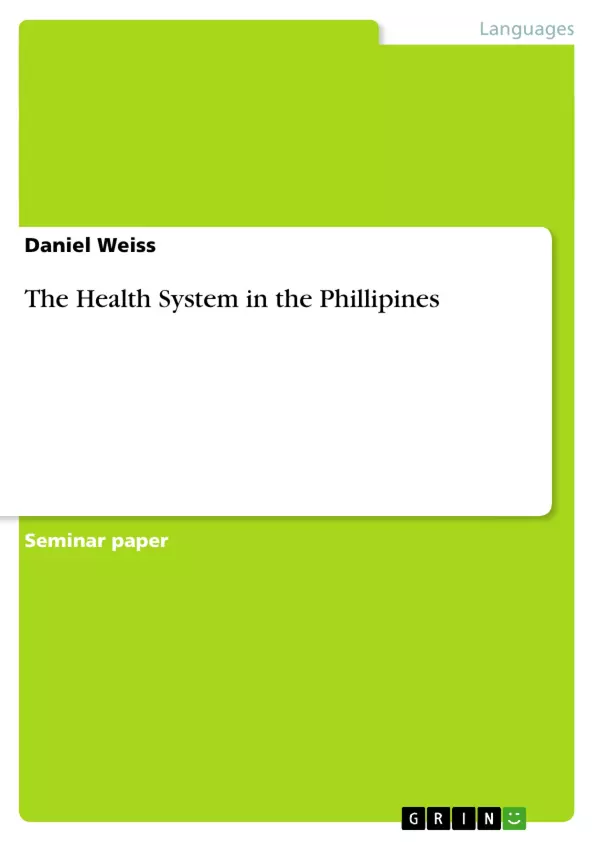The term social security is very complex and there is no clear definition. It is accepted that the social insurance system is a part of social security. But Social security is defined more broadly as a complex system of measures that shall provide social justice within a society via the solidarity principle. Therefore, social assistance is also a part of social security. According to a narrow definition social security is given when every member of society has achieved an acceptable standard of living. In Germany the definition of social security refers to its system of social insurance but social security is broader and further comprises measures within social policies e.g. an active labor policy, education policy etc. The German government focuses on the social insurance system as the
major column of social security as well. One focus of development policies of the German Federal Ministry for Economic Cooperation and Developments lies on social security. Within that framework major objectives are to strengthen social insurance systems and to provide basic social services to the (poor) populations of developing countries. The BMZ defines (national) social security systems as established institutions that are to support people in mitigating risks and coping with their impacts.
The aim in developing countries is to secure the (poor) population against the occurrence of future emergency situations and against existing current emergency situations. Social security systems shall strengthen the risk management capability in a sustainable way. This shall improve the capacity of coping mechanisms. Furthermore, there is a need for subsidizations of extremely poor people so that they can participate in social insurance systems.
The model for the development of social security systems in developing countries is the structure of the German welfare state. Thus, the provision of social security is a key task of the state. Germany’s social security system provides far-reaching security for
employees. It is based on the “five pillars” of social pension, disability, unemployment, long term care and health insurance. Four key principles have to be guaranteed for the successful implementation of social security systems.
Inhaltsverzeichnis (Table of Contents)
- 1. SOCIAL HEALTH INSURANCE AS A PART OF SOCIAL SECURITY
- 2. THE HEALTH STATUS IN THE PHILIPPINES
- 2.1 HEALTH INDICATORS
- 2.1.1 LIFE EXPECTANCY
- 2.1.2 MORTALITY RATES
- 2.2 ILLNESSES
- 2.3 REPRODUCTIVE HEALTH AND MALNUTRITION
- 2.4. ENVIRONMENT AND WATER
- 2.5. MISSING ACCESS
- 2.1 HEALTH INDICATORS
- 3. THE PHILIPPINE HEALTH SYSTEM
- 3.1 HEALTH FACILITIES, PERSONNEL AND THE DISTRIBUTION OF MEDICINES
- 3.2 REGIONAL DISSIMILARITIES AND THE DEVOLUTION
- 3.3 HEALTH CARE UTILIZATION
- 3.4 THE MAIN SECTOR PRIORITIES FOR HEALTH
- 4. HEALTH FINANCING IN THE PHILIPPINES
- 4.1 FINANCING RESOURCES AND AGENTS
- 4.1.1 PUBLIC SPENDING
- 4.1.2 PRIVATE SPENDING
- 4.1.3 EXTERNAL FUNDS
- 4.1.4 EQUITY WITHIN HEALTH FINANCING SYSTEM
- 4.2 USE OF FUNDS
- 4.2.1 PUBLIC HEALTH PROGRAMS
- 4.2.2 CURATIVE CARE
- 4.1 FINANCING RESOURCES AND AGENTS
- 5. PUBLIC HEALTH FINANCING AGENTS IN THE PHILIPPINES -SOCIAL SECURITY FUNDS
- 5.1 GSIS:
- 5.2 SSS:
- 5.3. PHILHEALTH:
- 5.3.1 VISION, MISSION, MEMBERSHIP AND BENEFITS
- 5.3.2 PHIHEALTH PROGRAMS
- 5.3.2.1 The Indigent Program
- 5.3.3 THE EFFECTS OF IP ENROLLMENT ON POOR PEOPLE
- 5.3.3.1 Utilization in RHUS
- 5.3.3.2 Utilization in hospitals
Zielsetzung und Themenschwerpunkte (Objectives and Key Themes)
This paper analyzes the state's role in social security in the Philippines, with a specific focus on the health system. It examines how social insurance programs, particularly the Philippine Health Insurance Corporation (PhilHealth), contribute to social protection. The study delves into the state's efforts to strengthen social security mechanisms, including the provision of basic health services for the poor.
- The role of social health insurance as a component of social security
- The health status of the Philippines and the challenges faced by the population
- The structure and functioning of the Philippine health system, including regional variations and the impact of decentralization
- The sources and allocation of health financing in the Philippines, examining public, private, and external funding contributions
- The impact of social security funds, specifically PhilHealth, on the health outcomes and access to healthcare for the impoverished population.
Zusammenfassung der Kapitel (Chapter Summaries)
Chapter 1 introduces the concept of social health insurance within the broader framework of social security, highlighting the significance of state intervention in ensuring a minimum standard of living. Chapter 2 presents an overview of the health status in the Philippines, outlining key indicators, prevalent illnesses, and challenges related to reproductive health, malnutrition, environmental factors, and access to healthcare. Chapter 3 delves into the Philippine health system, exploring the structure, distribution of health facilities, personnel, and medication, and the impact of regional disparities and decentralization on health service provision. Chapter 4 examines the financing of the Philippine health system, analyzing the contributions of public, private, and external funds, and exploring the equity considerations within the system. Chapter 5 focuses on social security funds, particularly PhilHealth, discussing its vision, mission, membership, benefits, and programs, including the Indigent Program. The chapter explores the utilization of PhilHealth programs and their effects on the health outcomes of impoverished populations.
Schlüsselwörter (Keywords)
The key focus of this paper is on social health insurance, social security, health status, health system, health financing, and the impact of social security funds, particularly PhilHealth, on the Philippines. The paper examines the provision of social protection, particularly for the poor, within the context of the country's healthcare system.
- Citation du texte
- Diplomkulturwirt Daniel Weiss (Auteur), 2006, The Health System in the Phillipines, Munich, GRIN Verlag, https://www.grin.com/document/73616



